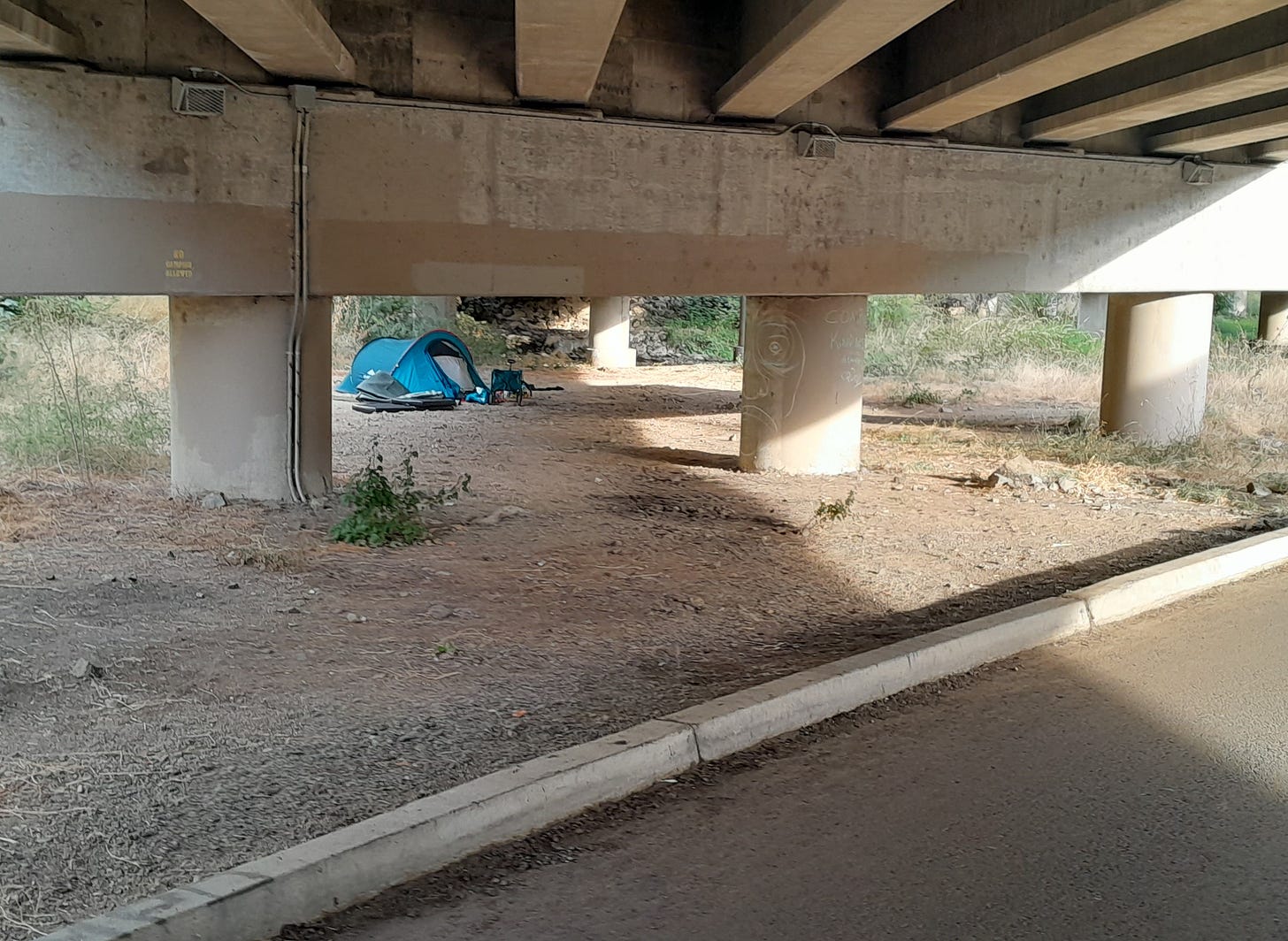Jogging Through Homeless Encampments
In recent months I’ve been traveling a lot, mainly to Western U.S. cities, reporting on the fentanyl crisis, giving talks at opioid conferences, and promoting Little Brother.
I’ve seen the fentanyl and meth crises spiraling further out of control, along with rising levels of homelessness.
It’s a point of controversy whether these cheaper-than-ever, more-powerful-than-ever drugs are driving homelessness, or if the housing crisis is to blame, though almost certainly both are factors.
This summer I went to the border in San Diego, Skid Row in L.A. (where you can’t even really get heroin or crack cocaine anymore; it’s all fentanyl and meth), the Tenderloin in San Francisco, and Seattle, Denver, and Southern Oregon. I’ve observed sprawling encampments and open-air drug markets not just while reporting, but also while jogging.
I’m up to 65 miles a week, training for my third marathon. Yes, I know it’s insane, and it’s also incredibly time consuming, even when you run lightning fast, as I do (ha). Don’t get me started on the chafing, the disgustingness of “gu,” or the hacky prose in running magazines. And please, if you see me, don’t tell me how skinny I look.
Yet I get a kick darting out of hotels at dawn to get in my miles, and it lets me see cities from the street level. I’ve traveled coast to coast this year, and while there’s certainly homelessness everywhere, to my eyes the problem seems most acute in the West.
The stronger social safety net in California is one factor, as is the more hospitable weather on the West Coast. (Even Denver supposedly gets 300 days of sunshine.)
These cities have long had large unhoused populations. Still, something’s different. Back when I lived in San Francisco, I used to play chess with homeless men near Civic Center; they almost always beat me and collected their 75 cents, but the whole thing was very civil. Now the area, adjacent to billion dollar tech companies and tourist districts, resembles a chaotic refugee camp.
While living in Los Angeles and training for my (botched) first marathon, every morning I’d run Ballona Creek trail to the ocean; now, there are encampments throughout.
I initially felt a bit unsafe running in these environments; I’ve mostly gotten over that, as no one has been aggressive towards me, or really paid me any attention at all. But if I were, say, a female runner, I’m not sure I would be comfortable solo.
Which is a big disadvantage; if I’m being honest, ALL of the long-distance running trails I’ve encountered in these cities have encampments, from the Southern Platte River Greenway in Denver to the Bear Creek Greenway in Medford, Oregon, where I ran this morning.
I don’t mean to sound insensitive. Unhoused people need somewhere to stay, and something feels just about them setting up tents along serene rivers amidst beautiful natural scenery, and taking over the parks where rich condo-dwellers walk their dogs.
But at root this humanitarian crisis is fueled by surging societal changes that almost nobody understands. Sure, the homelessness crisis is above my pay grade, but the fentanyl crisis is my pay grade, and for the life of me I can’t figure out how we’re going to slow this thing. I don’t think harm reduction is a panacea, and I definitely don’t think more arrests will help.
For the time being, I believe we all need to set aside our preconceived, partisan assumptions about these issues, and try to find our way to reality, no matter where it takes us. At the very least, let’s stop pretending these problems don’t exist, or that they won’t lead to further stratification of our already inegalitarian society.
I think I’ll go run 15 miles and mull on it some more.
In other news I was published, for the first time, in The New York Times, writing about cocaine users employing fentanyl test strips before partying. I was also featured in the National Geographic Channel documentary Narco Wars.







